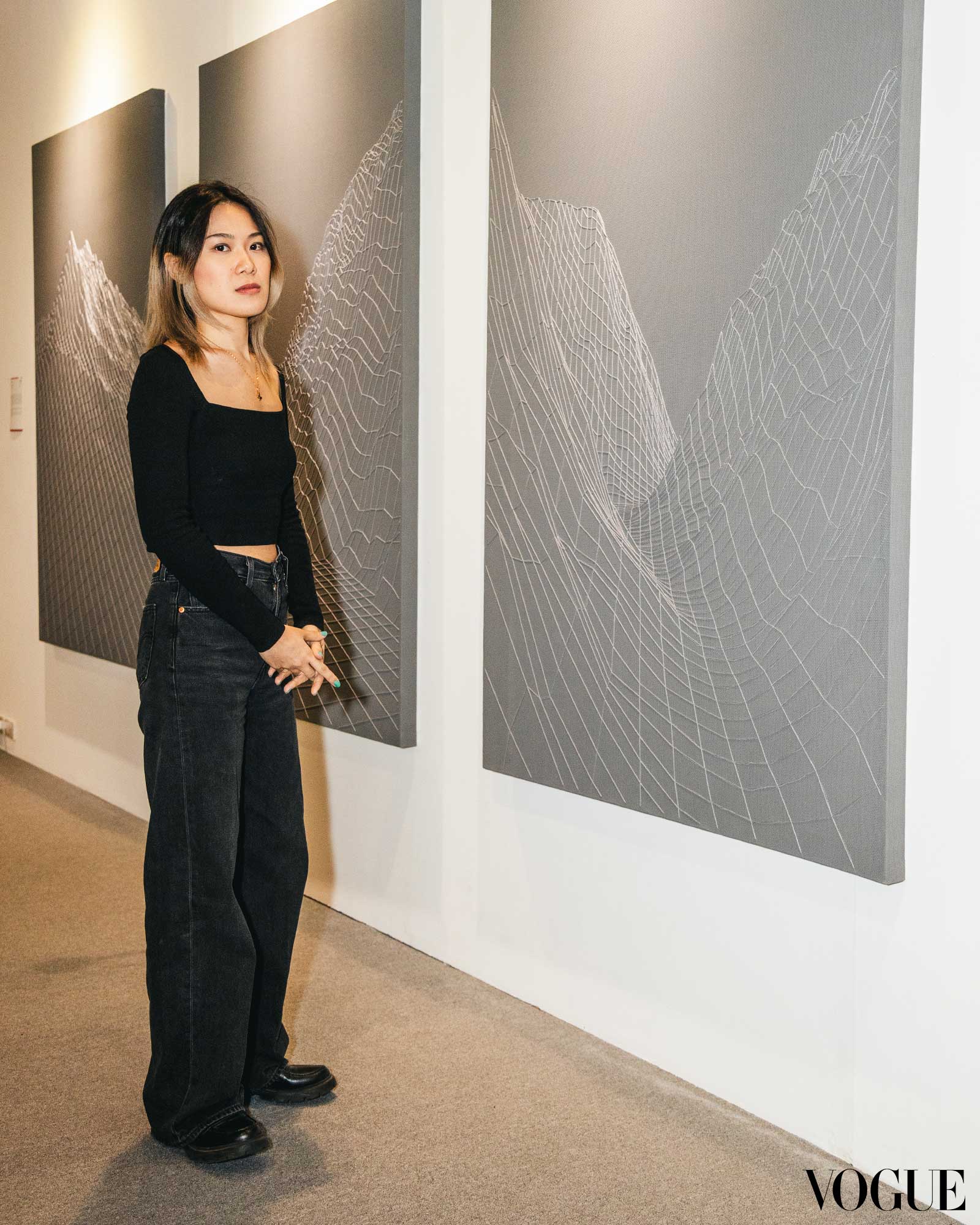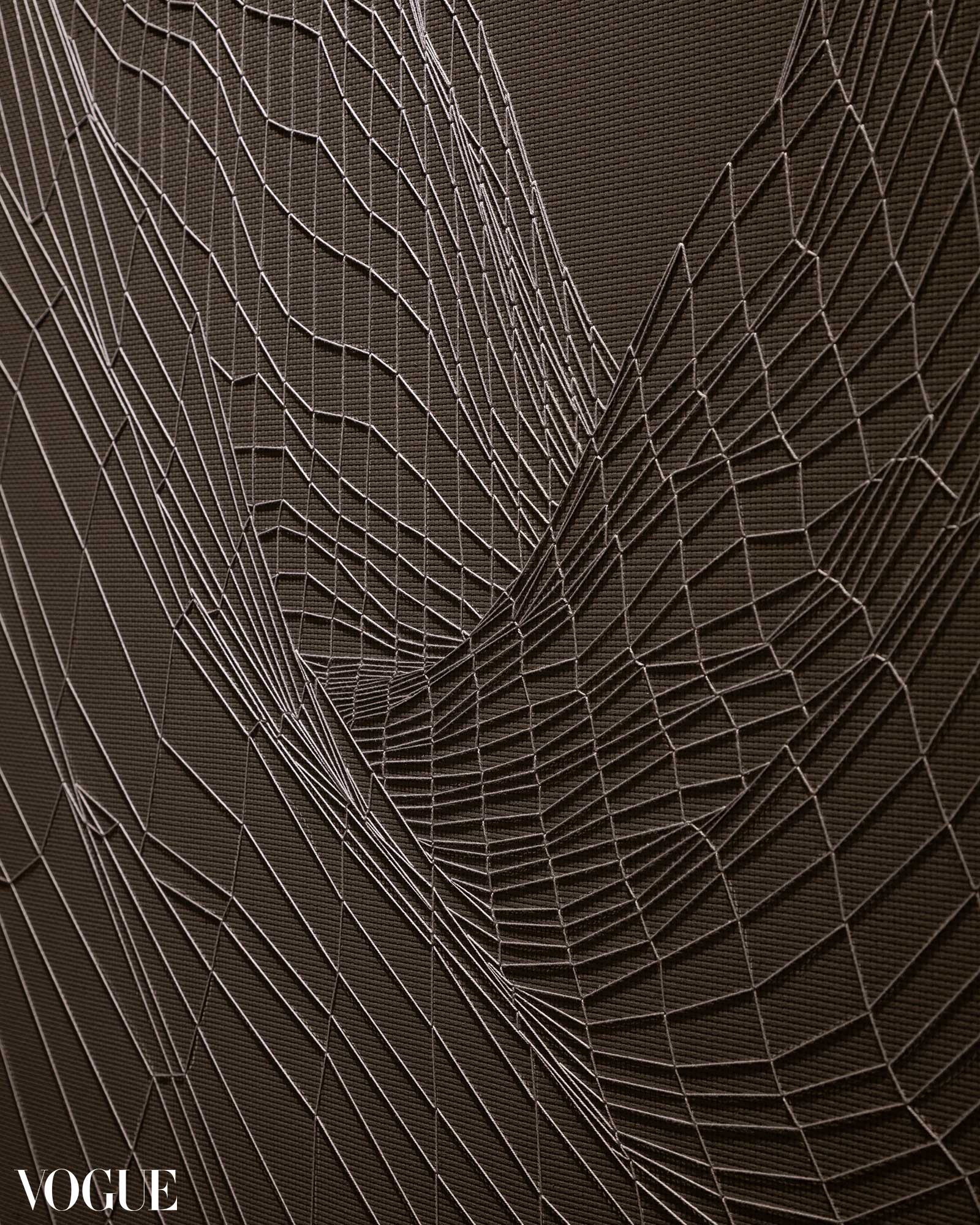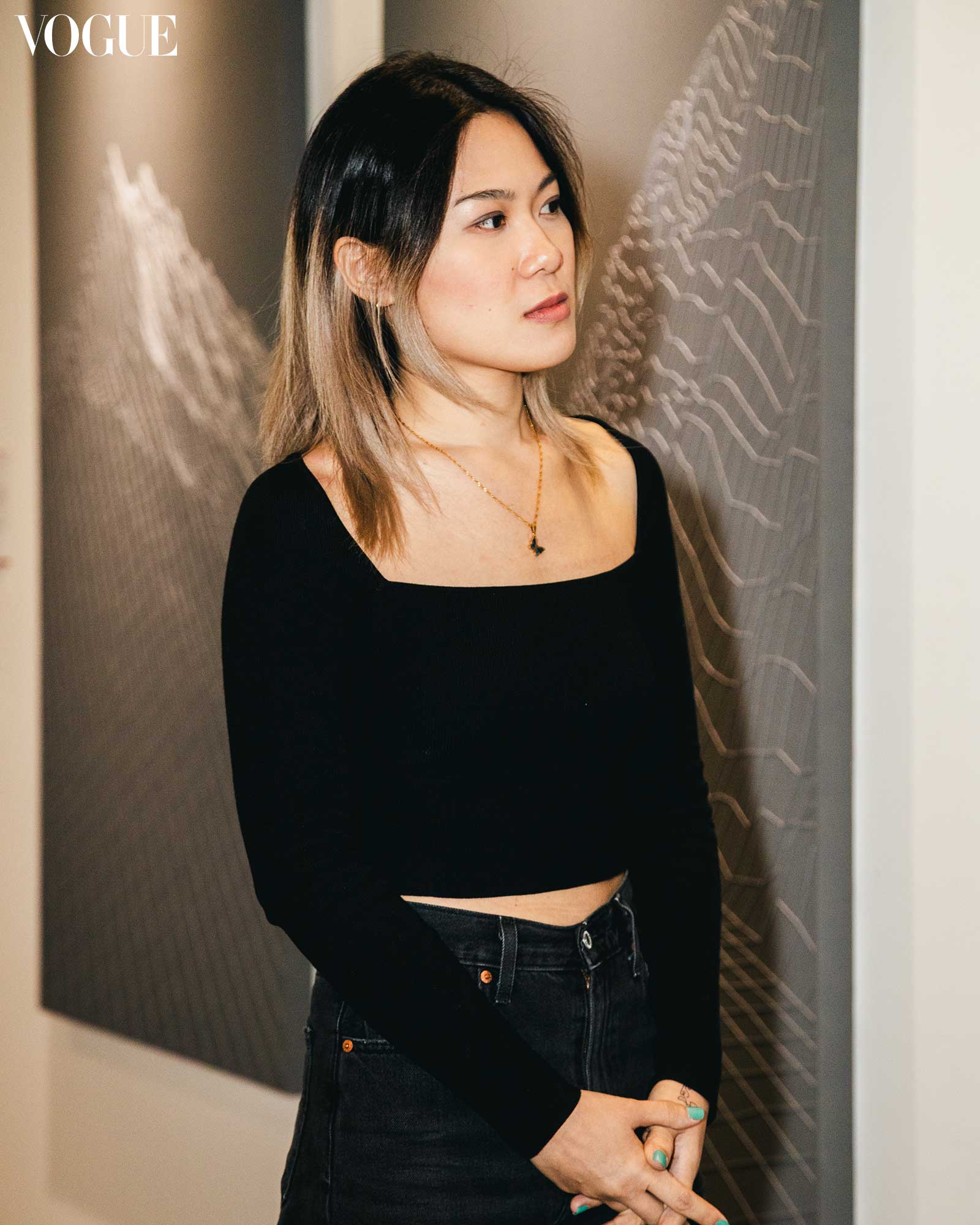Photo by Excel Panlaque
Combining digital and traditional techniques in her ALT Philippines 2024 exhibit, Celine Lee poses the question, “Who are the authors these days? Us or digital tools?”
When most people think about art, the last two things that come to mind are science and math. But for mixed-media artist Celine Lee, these two things come naturally with one another. For her ALT Philippines 2024 exhibit, Lee presents her Aida series entitled “Another Noise,” where she employs both digital and traditional techniques to create visual images of mountainscapes.
Sourced from presets in the 3D software Blender, Lee digitally rendered images of topographies and then stitched the imagery on Aida cloth, a fabric used for cross-stitch embroidery. “I found cross-stitching interesting. When I saw the grids in Aida cloth, it reminded me of a map with coordinates,” Lee says. With the digitally rendered images, Lee projected the mountainscapes on the Aida cloth, then sketched the topography on the fabric and stitched each line by hand. From afar, the artwork looks either painted or printed on canvas. Up close, guests can see each finely stitched line meticulously mapped out on the fabric.

In an exclusive interview with Vogue Philippines, Lee shares more details about her Aida series, her creative process, and the relationship between art, sciences, and mathematics.
This interview has been edited for length and clarity.
As an artist, your identity and style are tied to your exploration of contemporary realities through scientific and mathematical concepts. How did this come about?
When I started, that was my interest. Not in the sense that I’m nerdy about science or math, but because for me, science and math are innate in life as well as art. Basic scientific or mathematical concepts have philosophical meaning. On the math side, there’s geometric abstraction or composition. There’s something there that you can apply to art, even in the simplest ways.

In your work, you employ different types of techniques and use different mediums as a mixed-media artist. How do you choose which ones to work with?
It depends. For example, when it’s a group exhibition, there might be a curator, which means that there’s a curatorial prompt they give you, and then it makes you think, “How do I materialize this idea?” For my own shows, I do different art pieces; that’s when I explore. I don’t want to be stuck with one medium because I feel like my creativity will be boxed in. I’m creative in that way. When I do my own shows, it’s like creating a prototype because of technical or logistical problems. With my work, I see it more as an experiment. In terms of choosing which technique or medium, it depends on the curator and the idea that I have. I’m not a conceptual artist, but my work is heavy on the concept side. The idea comes first, and then I think, “How do I manifest that idea?”
For you, does the medium have a deeper role in art?
In my work, the medium is important because it should speak for itself to a certain extent. Concept, medium, and process are important. It doesn’t have to go in that order; you switch between the process and the medium. You also try to think about how it can be as effective as possible because, at the end of the day, it’s visual art. Even with conceptual works, for example, a pile of candies, it still has poetry, and it depends on the interpretation of each person and, at the same time, the artist’s intent.


In your Aida series, why did you choose to use these techniques and materials?
Basically, I wanted to show the juxtaposition or irony of a digital image being turned into traditional art. It can be printed or displayed on the screen, so what’s the point of going traditional, right? But for me, the very act of stitching is traditional and intimate. It’s a conversation about humanizing it, but at the same time, it poses the question, “Who are the authors these days? Us, or these digital tools?”
You’ve described your art process as something that’s “experimental.” As an artist, what is the biggest risk that you’ve taken?
Every show is a risk, especially solo exhibitions. Sometimes I think about sustainability because art can be expensive and there’s no guarantee that you will sell it. Being an artist itself is a big risk, as is experimenting in a way that you don’t know what’s going to happen.

What risks do you think other artists should take?
Don’t be afraid to work on a medium you’re not familiar with. Often, artists get stuck on this. There are artists who feel very confident with their medium, and there are those who aren’t. If you’re still trying to find your identity, you don’t have to stick to one medium or branding. Ask yourself first, “What is art for me?” If you’re not happy with what you’re doing, try a different medium. And also, don’t be afraid to show what you think or like. If you’re always afraid, nothing will happen. Be satisfied with your work first, and the risk can run its course.
- The Largest Installation At The 35th São Paulo Bienal Is By Filipino Artist Kidlat Tahimik
- Geraldine Javier’s Garden of Unearthly Delights
- Less Champagne, Less Fried Chicken: Expect ‘Simpler Work’ at Jigger Cruz’s Art Fair Philippines 2024 Exhibit
- Daata Leads The Digital Path At Art Fair Philippines 2024
